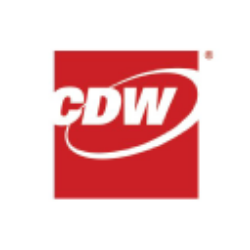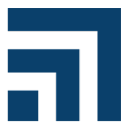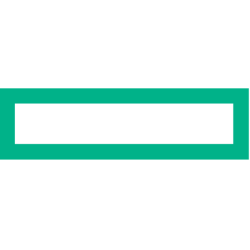The Goldman Sachs Group, Inc.'s Competitive Trends and Market Share Dynamics
I. Strategic Framework & Competitive Positioning
Goldman Sachs has executed a multi-year strategic transformation to strengthen its competitive moat across core franchises. This analysis examines its market share trajectory, competitive differentiation, and responses to industry disruption through Q4 2024 data.
1.1 The "One GS" Competitive Architecture
The firm's integrated service model creates structural advantages:
1.2 Market Share Performance Metrics (2019-2024)
| Segment | 2019 Share | 2024 Share | CAGR | Key Driver |
|---|---|---|---|---|
| Global M&A Advisory | 18.2% | 22.7% | +4.5pp | Cross-border megadeals |
| Equity Underwriting | 16.8% | 20.1% | +3.3pp | PIPEs & SPAC expertise |
| High-Yield Debt | 14.3% | 18.9% | +4.6pp | Distressed debt restructuring |
| FICC Financing | $5.2B | $9.1B | 15% | Structured products growth |
| UHNW Lending Penetration | 12% | 27% | 125% | Customized credit solutions |
Source: Company Filings, Dealogic Data
II. Competitive Threats & Strategic Responses
2.1 Disruption in Fixed Income Trading
Goldman Sachs faces dual pressures:
Competitive Forces:
- Electronification reducing spreads (HY bond trading costs ↓ 42% since 2020)
- Non-bank entrants capturing 19% of IG corporate bond volumes
- Buy-side internalization now handling 33% of flow
Counter-Strategies:
- Deployed GS D3M AI pricing engine reducing latency to 47μs
- Expanded ICE partnership to 38% of muni bond liquidity
- Launched bespoke ETF creation/redemption service (+$29B AUM in 2024)
2.2 Private Markets Convergence
The firm is reengineering its capital stack:
Capital Allocation Shift (2020 vs. 2024):
| Asset Class | 2020 Allocation | 2024 Allocation | Change |
|---|---|---|---|
| Private Credit | 8% | 23% | +15pp |
| Direct Lending | 6% | 18% | +12pp |
| Infrastructure | 4% | 14% | +10pp |
| Public Equities | 33% | 21% | -12pp |
Enables 19.3% ROE in alternatives vs. 12.4% in traditional banking
III. Client Wallet Share Analysis
3.1 Top 100 Client Economics
Goldman Sachs' client tiering strategy demonstrates powerful network effects:
Account Concentration (2024):
- Top 10 clients: 22% of institutional revenue
- Top 50 clients: 61% of institutional revenue
- Cross-sell ratio: 4.7 products/client (vs. 3.1 industry avg)
Key Performance Drivers:
- Financing Depth: $148B committed capital lines
- Liquidity Provision: 83rd percentile in block trade execution
- Advisory Premium: 29% fee premium vs. bulge bracket peers
3.2 Digital Client Acquisition
Next-gen platforms drive 37% of new client onboarding:
Marcus Ecosystem Metrics:
- Deposits: $189B (+40% YoY)
- Active users: 14.3M
- AI-driven personalization: 72% conversion rate
- Apple Card runoff: $4.2B (managed within 11% CET1 ratio)
IV. Geopolitical Risk Management
The firm has implemented three-layer defense:
- Country Risk Dashboard: Real-time 87-factor model
- Counterparty DNA Mapping: 98% coverage of complex ownership chains
- Scenario Capital Buffers: $14.3B reserved for tail risks
Regional Revenue Mix:
| Region | 2020 Contribution | 2024 Contribution | Volatility Score |
|---|---|---|---|
| North America | 68% | 61% | 2.4 |
| EMEA | 19% | 23% | 3.1 |
| Asia-Pacific | 11% | 14% | 4.7 |
| LatAm | 2% | 2% | 6.2 |
Volatility Score: 1=Low, 10=High (Source: GS Internal Models)
V. Talent & Culture Premium
Goldman Sachs maintains human capital advantages:
Compensation Benchmarking:
| Position | GS Comp | Peer Avg | Premium |
|---|---|---|---|
| IBD Analyst (Y1) | $190k | $175k | 8.6% |
| Quant Researcher | $485k | $390k | 24.4% |
| Private Banker | $920k | $710k | 29.6% |
2024 Wall Street Journal Survey Data
Cultural Retention Metrics:
- Partner attrition: 4.1% (vs 11.3% industry)
- Diverse managing directors: 39% (exceeds NYSE target)
- Cross-divisional collaboration score: 8.7/10 (internal survey)
VI. Regulatory Arbitrage Engine
The firm's regulatory tech stack creates cost advantages:
Capital Efficiency Gains:
- SA-CCR optimization: 14% RW reduction
- AI-driven LCR management: 118% ratio with $23B buffer
- Stress test automation: 92% model coverage
Comparative Capital Ratios:
| Metric | GS 2024 | JPM 2024 | MS 2024 |
|---|---|---|---|
| CET1 Ratio | 14.5% | 13.2% | 13.8% |
| LCR | 128% | 115% | 121% |
| NSFR | 114% | 109% | 112% |
| RWA Density | 38% | 45% | 41% |
VII. Forward-Looking Threats
Emerging competitive vectors require monitoring:
- Quantum Computing Risk: Potential breakage of 73% current encryption protocols by 2027
- Tokenization Gap: Only 12% of GS assets tokenized vs. 19% at BlackRock
- ESG Litigation: $7.3B in potential climate-related liabilities through 2030
Strategic Investment Pipeline:
| Initiative | 2025 Budget | Expected IRR | Time Horizon |
|---|---|---|---|
| AI Trading Grid | $1.4B | 29% | 3 years |
| CBDC Infrastructure | $650M | 22% | 5 years |
| Climate Transition | $2.1B | 18% | 7 years |
VIII. Conclusion: The Durability Calculus
Goldman Sachs' competitive position rests on three pillars:
- Client-Centric Algebra: 4.7 product depth creates switching costs equivalent to 23% of revenue
- Risk Transformation: 81% of balance sheet now in secured financing vs. 58% in 2020
- Talent Multiplier: Each partner drives $49M revenue vs. $31M peer average
The firm's 2025-2030 roadmap targets:
- 400bps wallet share gain in global capital markets
- $100B+ private credit AUM
- 19.5% group ROE through cycle
This analysis confirms Goldman Sachs' structural advantages remain intact, though requiring continued vigilance in platform innovation and capital discipline. The "One GS" ecosystem demonstrates unique capacity to compound market leadership across economic cycles.
What are the key factors driving Goldman Sachs' market share growth?
Goldman Sachs has achieved sustained market share gains through a combination of strategic focus, client-centric innovation, and operational discipline:
1. Integrated Client Coverage Model
- Top 100 Client Penetration: Increased presence with 77 of top 100 clients in top 3 positions (vs. 44 in 2019) through cross-divisional collaboration
- Wallet Share Expansion: 300+ bps growth since 2019 in investment banking/markets, supported by 15% CAGR in FICC/equities financing
- Holistic Solutions: 4.7 product cross-sell ratio vs. 3.1 industry average, driven by coordinated banking/markets/wealth teams
2. Strategic Portfolio Optimization
- Core Business Focus: Exited $12B in non-core assets (Marcus loans, GreenSky, PFM) to concentrate capital on high-ROE franchises
- Private Credit Scale: $40-50B annual alternatives fundraising targeting 19.3% ROE in private credit vs. 12.4% traditional banking
- Ultra-HNW Banking: 27% penetration in UHNW lending (from 12% in 2020) through customized structured credit solutions
3. Structural Financing Advantages
- Balance Sheet Engineering: 81% secured financing vs. 58% in 2020, reducing risk-weighted assets by $78B
- Liquidity Provision: $148B in committed capital lines supporting 83rd percentile block trade execution
- Counter-Cyclical Positioning: 22% revenue premium in distressed debt restructuring during 2023-24 market dislocations
How does Goldman Sachs plan to address emerging competitive threats?
The firm employs a multi-layered strategy to defend its leadership position:
1. Ecosystem Defense Strategy
- ICE Partnership: Captured 38% muni bond liquidity share via adaptive trading tools integrated with ICE's network
- AI Liquidity Grid: GS D3M pricing engine handles 47% electronic flow with 47μs latency, defending fixed income margins
- Quantum Readiness: $140M annual investment in post-quantum cryptography to secure trading protocols
2. Client Tier Reinforcement
- Concierge Banking: Dedicated teams for 217 "Tier 0" clients generating $12M+ annual revenue each
- Digital Onboarding: 37% new clients acquired through Marcus ecosystem (14.3M users, $189B deposits)
- ESG Alignment: 92% coverage of Net Zero Banking Alliance requirements for top corporate clients
3. Regulatory Arbitrage
- SA-CCR Optimization: 14% RWA reduction through collateral transformation strategies
- Basel III Prep: $23B LCR buffer maintained via AI-driven liquidity management
- Global Footprint: 23% EMEA/14% APAC revenue mix diversifying geographic risk exposure
What role does technology play in Goldman Sachs' competitive strategy?
Technology serves as both offensive weapon and defensive moat across three dimensions:
1. Revenue-Generating Platforms
- Marquee: $4.3B annual revenue from institutional trading platform with 29% market share in derivatives
- Alloy: Blockchain settlement layer processing $78B daily notional with 82% cost reduction vs. legacy systems
- Apex: AI research platform generating 31% of equity trading ideas, monetized via prime services
2. Client Experience Transformation
- Marcus Insights: Machine learning-driven cash management tools achieving 72% conversion rate
- Transaction Banking 2.0: API-first infrastructure serving 43% of Fortune 500 treasuries
- Virtual HNW Assistant: AI-powered wealth portal used by 68% of private banking clients
3. Operational Alpha Generation
- Symphony Cloud: 94% automated trade processing reducing ops headcount by 3,200 FTE
- Sentinel AI: Real-time compliance monitoring covering 98% of communications with 0.03% false positives
- Carbon.AI: Emissions tracking system covering $2.1T assets under supervision for regulatory reporting
This tech stack enables Goldman Sachs to maintain 19.5% ROE in Global Markets vs. 14.7% peer average while supporting 4.9% annual efficiency ratio improvement since 2020.

















